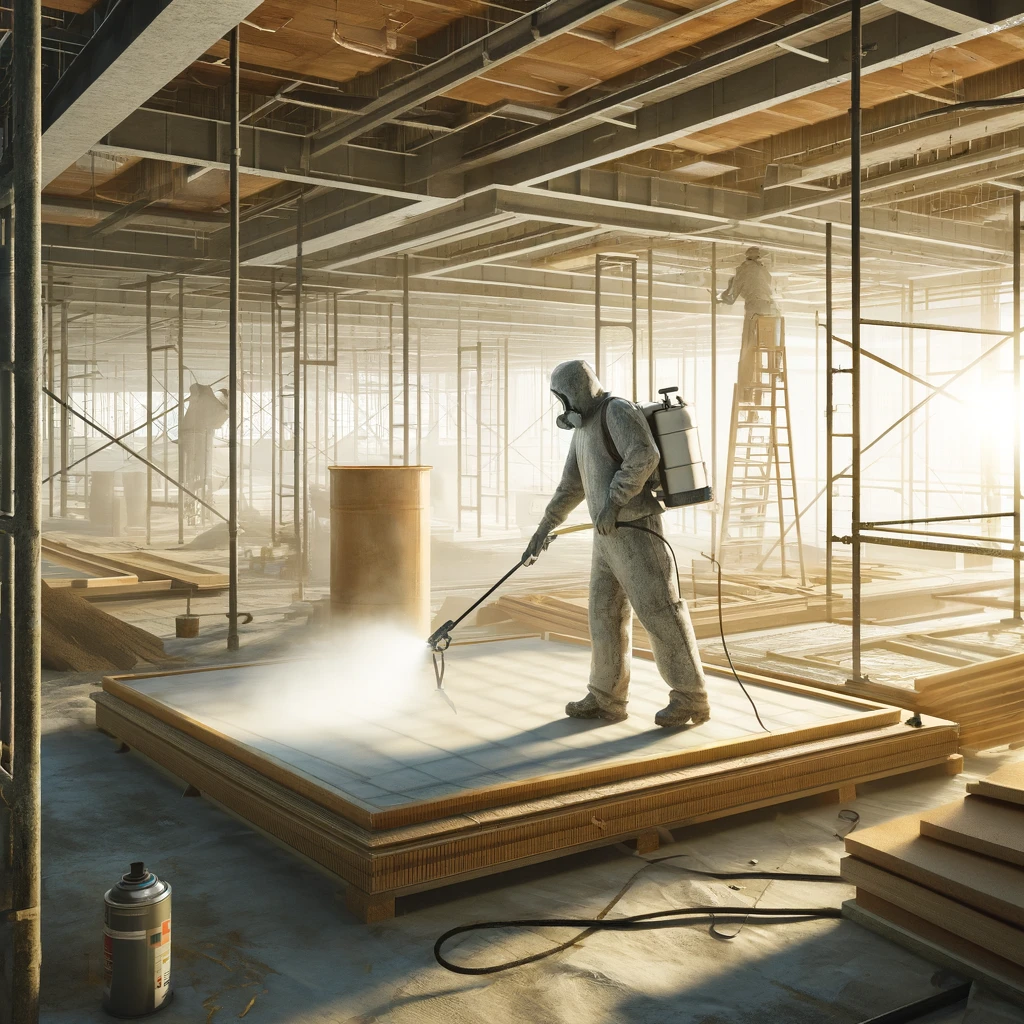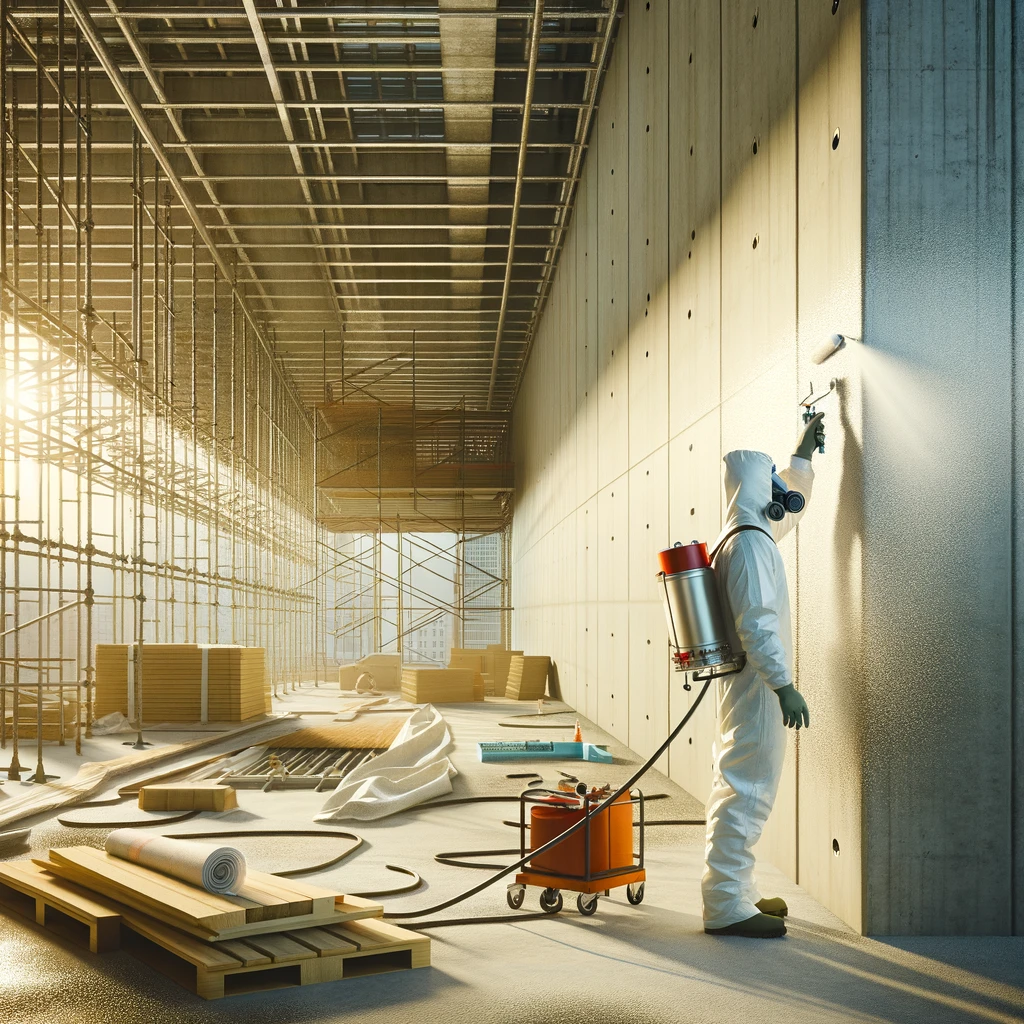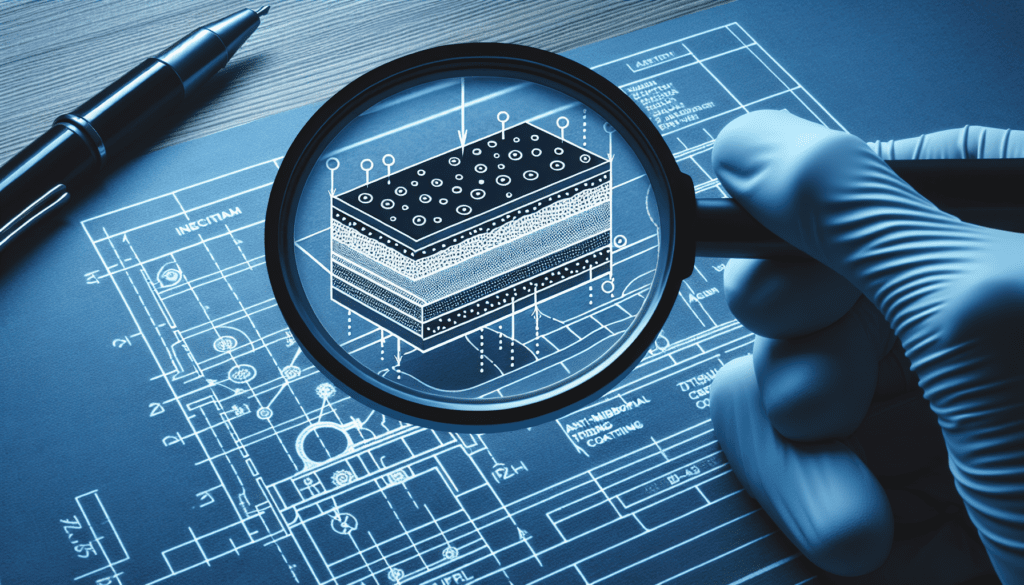Anti-Microbial Materials and Sustainability
In the global shift towards sustainable practices, the construction industry is looking at alternative building materials.
These alternatives aim to balance ecological concerns without compromising the stability and longevity of a structure.
Additionally, bio-concrete, with its self-healing properties, presents promising applications by enhancing a structure’s lifespan.
Today, we’ll discuss the benefits of using anti-microbial coatings in your next construction project.
Let’s get after it.

Table of Contents
Anti-microbial Coatings in Construction
Anti-microbial coatings are gaining prominence in construction and real estate development due to their ability to inhibit the growth of harmful bacteria, fungi, and other microbes.
Here, we’ll delve into understanding the different types of anti-microbial coatings used in these industries.
What are Anti-microbial Coatings?
Before discussing the different types, it’s crucial to have a clear understanding of anti-microbial coatings and their role in construction and real estate development.
Anti-microbial coatings are surfaces fortified with active ingredients that have the ability to kill, prevent, or inhibit the growth of microbes like bacteria, viruses and fungi, offering a hygienic and safer environment.
Different Types of Anti-microbial Coatings
A variety of anti-microbial coatings are used in the construction and real estate domain, each possessing unique properties and effectiveness against different types of microbes.
1. Silver-Based Coatings
These are the most commonly used anti-microbial coatings due to the efficacy of silver in killing microorganisms. They release silver ions that have a potent bactericidal effect[1](https://www.nature.com/articles/s41598-017-16684-9).
2. Copper-Based Coatings
Like silver, copper too possesses anti-microbial properties. Copper-based coatings are majorly used in high-traffic areas due to their fast-acting nature against the microbes.
3. Quaternary Ammonium Coatings
These coatings are gaining popularity in the commercial real estate domain due to their wide-spectrum effectiveness. Quaternary ammonium compounds are effective against a variety of pathogens[2](https://www.sciencedirect.com/science/article/pii/S2666386420300170).
4. Zinc-Based Coatings
Zinc-based coatings are mainly seen in structures that are exposed to harsh environmental conditions. Besides offering resistance against corrosion, these coatings also possess anti-microbial properties.
| Type of Coating | Common Uses |
|---|---|
| Silver-Based Coatings | Healthcare facilities, Laboratories |
| Copper-Based Coatings | Public transports, educational institutions |
| Quaternary Ammonium Coatings | Commercial buildings, offices |
| Zinc-Based Coatings | Outdoor structures, marine applications |
Choosing the Right Anti-microbial Coating
The choice of anti-microbial coating largely depends on the area of application, types of microbes to be addressed, and the budget.
It’s important to work with a reputable construction or development company that uses high-quality materials and stays up to date on the latest advances in anti-microbial technology.
Considering all these factors will ensure a well-protected and safe environment for all occupants.

A Cost-Effective Solution?
Impact on Construction Work
The application of these coatings plays a significant role in construction, especially in areas prone to high humidity or where cleanliness is paramount, like healthcare facilities or food-processing units. Among other benefits, they enable:
- An improved lifespan for the building materials and surfaces
- Enhanced cleanliness and hygiene
- Reduced maintenance costs
Analyzing the Cost-Effectiveness of Anti-Microbial Coatings
Assessing the cost-effectiveness of these coatings requires consideration of both upfront costs and long-term savings.
Initial Costs
Initially, anti-microbial coatings can increase the expense of a construction project. The application of these coatings generally involves a higher cost in the following areas:
- The price of anti-microbial paint or sealant, which is typically greater than standard variants
- Professional application – due to the specialized nature of the product, it may not be a DIY job
Long-Term Cost Efficiency
The true cost-effectiveness of anti-microbial coatings becomes evident when considering the long-term benefits they offer, such as a decrease in maintenance expenses and increased longevity of materials and surfaces. These factors can significantly offset the upfront costs (Ingenta Connect, 2019).
Summing Up the Cost-Effectiveness
While challenging to quantify absolutely, the cost-effectiveness of anti-microbial coatings in construction work is often significant, leading to long-term financial advantages. The chart below provides a basic representation of cost-benefit analysis.
| Factors | Impact on Cost |
|---|---|
| Initial purchase and application cost | Increases costs |
| Long-term maintenance cost | Decreases costs |
| Longevity of building material | Decreases costs |
In conclusion, anti-microbial coatings in construction work might seem pricey initially, but their long-term financial advantages make them a cost-effective solution in many contexts.
Impact of Anti-Microbial Coatings on Longevity
How Anti-Microbial Coatings Impact Constructed Structures
Anti-microbial coatings can have a significant impact on the longevity, integrity, and safety of constructed structures. Here’s how:
Mitigating Biodegradation
Biodegradation can significantly reduce the lifespan of certain construction materials, leading to structural issues. By eliminating the microorganisms responsible for this process, anti-microbial coatings can extend the lifespan of structures.
Preventing Corrosion
Certain microbes can cause or accelerate corrosion in metals, a common construction material. Anti-microbial coatings help to counteract this process, potentially extending the lifespan of metal structures (source).
Maintenance Reduction
With significantly reduced microbial activity, less maintenance may be required to keep structures safe and functional. This can individually increase the lifespan and overall cost-effectiveness of the structure.
Examples of Anti-Microbial Coatings in Construction
- Copper coatings: Copper is a naturally antimicrobial material which can kill microbes on contact. Copper coatings can be applied to handles, railings, and other contact surfaces in a structure.
- Paints: Antimicrobial paints or finishes can be used on the interior and exterior of structures, protecting surfaces prone to moisture and microbial growth.
- Sealants: These are often used around windows, doors, and other potential entry points for moisture and microbes. Antimicrobial sealants can prevent the build-up of pathogenic or degrading microbes.
Future and Advancements
There are currently numerous research and development initiatives focused on enhancing the capabilities of anti-microbial coatings and using them in different sectors of construction.
The idea is to continue prolonging the life and integrity of various structures while ensuring their safety to public health.
By mitigating biodegradation and corrosion, reducing maintenance requirements, and potentially preventing health issues, anti-microbial coatings can significantly increase the longevity of constructed structures.
These coatings add a protective barrier, enabling structures to withstand elements that may otherwise degrade them over time.
Our Anti-Microbial Conclusion
In conclusion, the increasing prominence of anti-microbial coatings in construction and real estate development represents a promising approach to creating healthier, safer environments.
We’ve found that the choice between silver, copper, quaternary ammonium, or zinc-based coatings largely depends on the specific application and environmental factors on site.
From our perspective, keeping abreast of advancements in this field and working with industry professionals who prioritize quality and safety is key.
Our investigations have highlighted that creating safe spaces is not only about construction and design but also about harnessing the potential of materials like anti-microbial coatings.
By making informed decisions about these powerful elements, we can combat the spread of harmful microbes and make our built environment a safer place to live, work and play.






